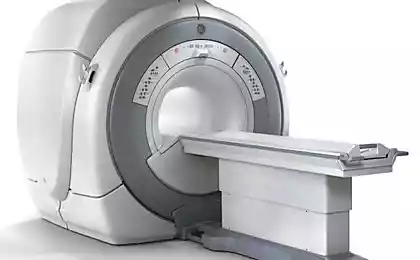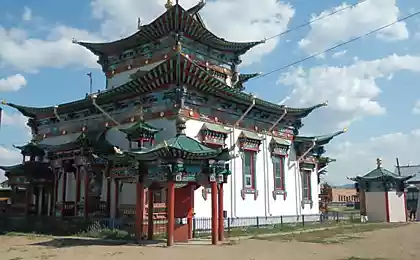812
Roth Ritter: space travel
Ritter Roth (Roth Ritter) a composer by profession. He began writing music in the 90s. Borrowing sound of Depeche Mode, Vangelis melodic, electronic arpeggios Tangerine Dream, from the time he found his sound. Currently Roth Ritter - quite an original composer working at the intersection of genres, "ambient" and the classic electronic music. His debut album, Umbra, was released in 2009.
When writing music Ritter draws inspiration from the vast expanses of space. He is keen on astrophotography; many of his works got on the cover of famous magazines (Sky & Telescope, Astro Photo Insight, DéCOUVERTE Magazine) and to the site Astronomy Picture of the Day. The focus of interest Rota - deep-sky objects: clusters, nebulae and galaxies.
10 photos via biguniverse.ru
1. The famous globular cluster M13 in Hercules - a favorite subject for observation for amateur astronomers. Not passed it, and Roth Ritter. 25 thousand years of light comes to us from this old star cluster. In a small telescope M13 looks like a hazy ball with a diameter of 20 ', which corresponds to 145 light years. Not far from the cluster, about 40 minutes of arc to the northeast, noticeable faint (11th star. Led.) Galaxy NGC 6207. In 2004, this galaxy flared type II supernova (SN 2004A). Tools: Telescope RCOS 10RCA, f / 7 (1825mm), the mount Paramount ME, camera SBIG STL-11000M. Photos: Roth Ritter
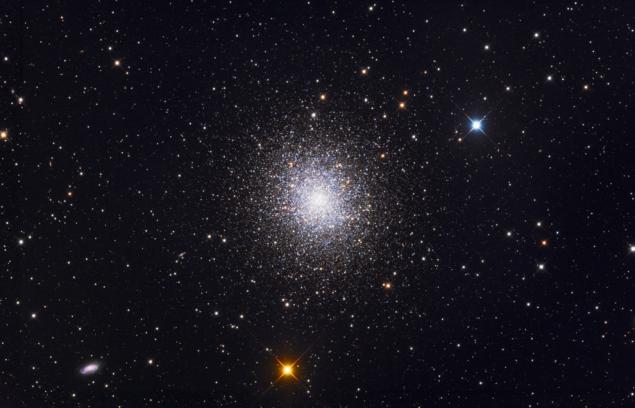
2. Gamma Cygni Region, shot through the filters H-alpha, RGB. The star Gamma Cygni is on the left outside the picture. The distance to the Gamma Cygni is about 750 light years from Earth, but the star is not related to a huge nebula that surrounds it in the sky. The dust and glowing hydrogen are much further and take up to 4 times larger area than shown. Photos: Roth Ritter
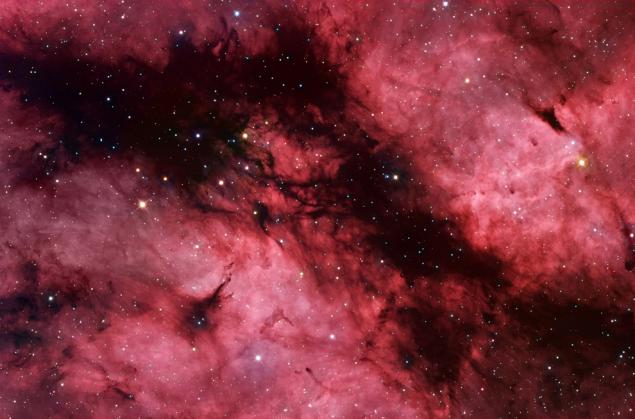
3. Pelican Nebula, another emission nebula in the constellation Cygnus. The nebula is close to Deneb and is separated from the bright stars and the greater the size of North America Nebula. In this amazingly clear and detailed image shows the columns of gas and dust in the heart of Pelican Nebula and dark globules - compact clusters of cold gas, inside of which stars form. Photos: Roth Ritter
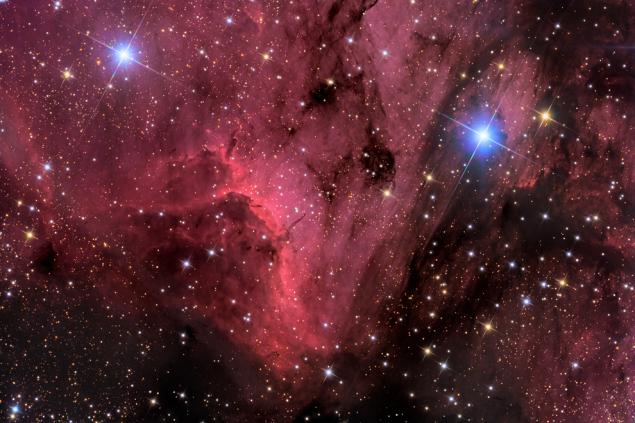
4. The spiral galaxy M106 in the constellation Hunting Dogs. Its distance is estimated at 22-25 million light-years. M106 belongs to a class of so-called Seyfert galaxies. This means that excess galaxy shows the X-ray radiation, and in its spectrum contains unusual line. Probably, in the center of M106 is a supermassive black hole, absorbing substance. Near the M106, we see another galaxy, NGC 4217, which is probably the companion M106. Tools: Telescope RCOS 10RCA, f / 7 (1825mm), the mount Paramount ME, camera SBIG STL-11000M. Photos: Roth Ritter
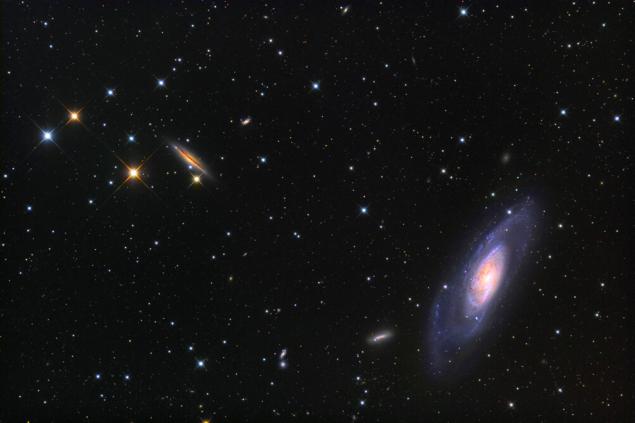
5. Western Veil Nebula, also known as the Cygnus Loop. Veil Nebula - a remnant from a supernova explosion. In spite of the large area, the nebula is also relatively faint. Especially startling numerous details that emerged in this image. Photos: Roth Ritter
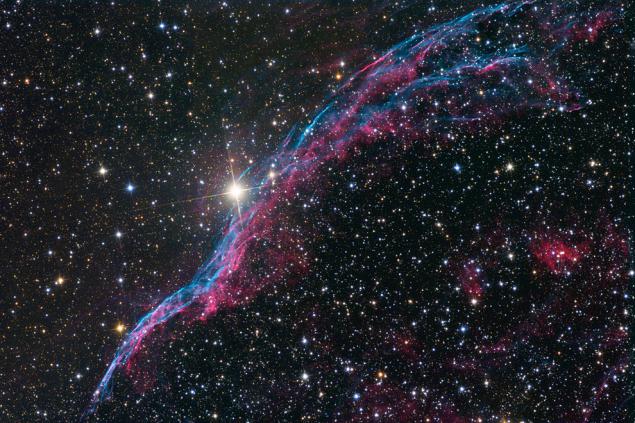
6. Detailed image of star cluster Cribs (M44, NGC 2632 or Cr 189) in the constellation of Cancer. This is one of the closest star clusters. On the palate it is visible to the naked eye as a hazy star 4th star. value. Ptolemy described the cluster as a "nebulous mass in the breast cancer." Cluster Nursery was the first object to which Galileo turned his telescope. Photos: Roth Ritter
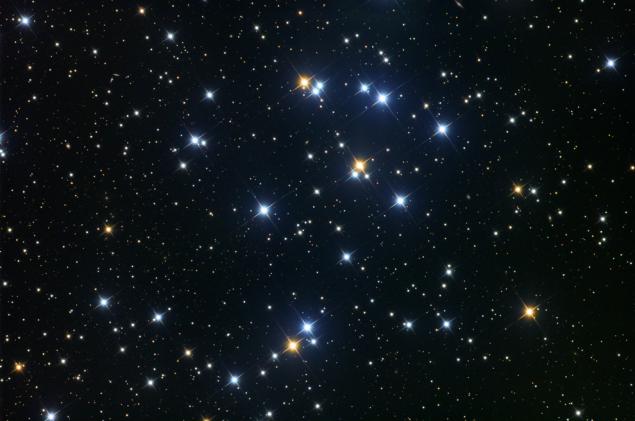
7. Great Orion Nebula (M42, or NGC 1976). Grand cloud of interstellar hydrogen, winter nights visible to the naked eye - the nearest place to us where currently stars are born. Prior to 1270 light years, M42, the nebula is 24 light-years across. Tools: Telescope RCOS 10RCA, f / 7 (1825mm), the mount Paramount ME, camera SBIG STL-11000M. Photos: Roth Ritter
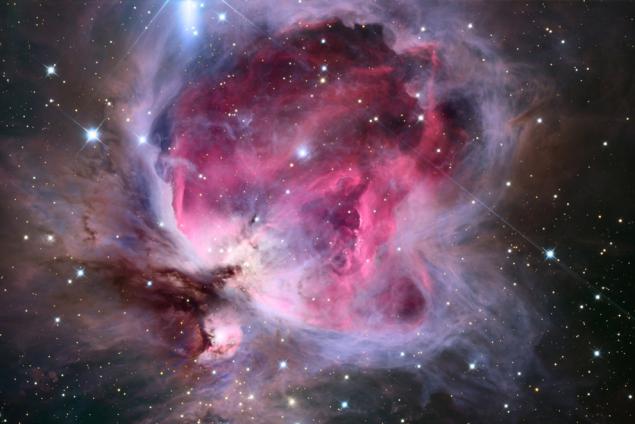
8. Magnificent spiral galaxy NGC 4565, we observed edge-on. Thanks to its narrow profile of the galaxy known to amateur astronomers, under the name Eagle. NGC 4565 - a rather bright object: apparent magnitude is equal to 9, 5. Along with many other galaxies, the needle is in a weak but beautiful constellation Coma Berenices. This sharp image noticeable difference in color between the convex bulge and the edges of the galaxy. In the center of NGC 4565 is dominated by old yellowish stars, while the end of the world by young blue giant stars. Needle galaxy like our Milky Way Galaxy as the shape and dimensions. The distance of NGC 4565 is only about 30 million light-years. Tools: Telescope RCOS 10RCA, f / 7 (1825mm), the mount Paramount ME, camera SBIG STL-11000M. Photos: Roth Ritter
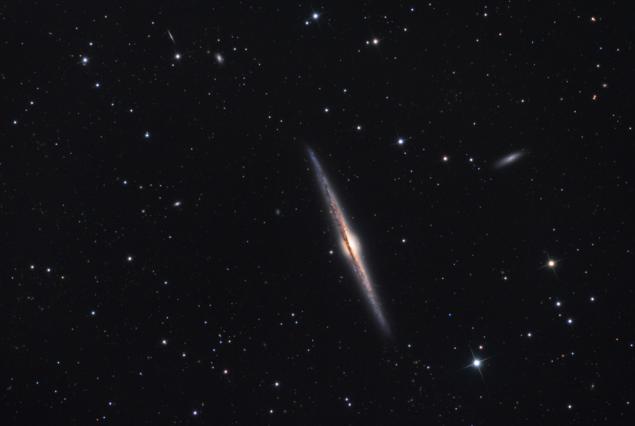
9. Weak reflection nebula vdB 141 lies in the constellation Cepheus. The nebula illuminates young, has not yet formed the star BD + 67 1300 which belongs to the class of "fuors" variable type FU Ori. Photos: Roth Ritter

10. M46 star cluster in the constellation Vela. Cluster is located about 5,500 light years from Earth, its age is estimated at several hundred million years. Inside the cluster, we see the planetary nebula NGC 2438, which, however, is unlikely to physically associated with the accumulation of: radial velocity of NGC 2438 and M46 are not the same. Here, the author used all the same tools: Telescope RCOS 10RCA, f / 7 (1825mm), the mount Paramount ME, camera SBIG STL-11000M. Photos: Roth Ritter
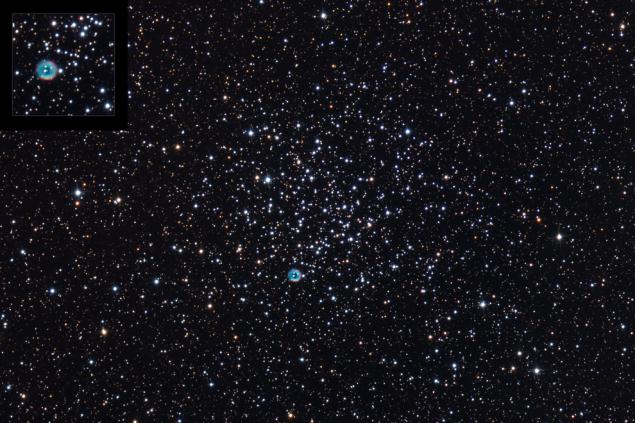
Source:
When writing music Ritter draws inspiration from the vast expanses of space. He is keen on astrophotography; many of his works got on the cover of famous magazines (Sky & Telescope, Astro Photo Insight, DéCOUVERTE Magazine) and to the site Astronomy Picture of the Day. The focus of interest Rota - deep-sky objects: clusters, nebulae and galaxies.
10 photos via biguniverse.ru
1. The famous globular cluster M13 in Hercules - a favorite subject for observation for amateur astronomers. Not passed it, and Roth Ritter. 25 thousand years of light comes to us from this old star cluster. In a small telescope M13 looks like a hazy ball with a diameter of 20 ', which corresponds to 145 light years. Not far from the cluster, about 40 minutes of arc to the northeast, noticeable faint (11th star. Led.) Galaxy NGC 6207. In 2004, this galaxy flared type II supernova (SN 2004A). Tools: Telescope RCOS 10RCA, f / 7 (1825mm), the mount Paramount ME, camera SBIG STL-11000M. Photos: Roth Ritter

2. Gamma Cygni Region, shot through the filters H-alpha, RGB. The star Gamma Cygni is on the left outside the picture. The distance to the Gamma Cygni is about 750 light years from Earth, but the star is not related to a huge nebula that surrounds it in the sky. The dust and glowing hydrogen are much further and take up to 4 times larger area than shown. Photos: Roth Ritter

3. Pelican Nebula, another emission nebula in the constellation Cygnus. The nebula is close to Deneb and is separated from the bright stars and the greater the size of North America Nebula. In this amazingly clear and detailed image shows the columns of gas and dust in the heart of Pelican Nebula and dark globules - compact clusters of cold gas, inside of which stars form. Photos: Roth Ritter

4. The spiral galaxy M106 in the constellation Hunting Dogs. Its distance is estimated at 22-25 million light-years. M106 belongs to a class of so-called Seyfert galaxies. This means that excess galaxy shows the X-ray radiation, and in its spectrum contains unusual line. Probably, in the center of M106 is a supermassive black hole, absorbing substance. Near the M106, we see another galaxy, NGC 4217, which is probably the companion M106. Tools: Telescope RCOS 10RCA, f / 7 (1825mm), the mount Paramount ME, camera SBIG STL-11000M. Photos: Roth Ritter

5. Western Veil Nebula, also known as the Cygnus Loop. Veil Nebula - a remnant from a supernova explosion. In spite of the large area, the nebula is also relatively faint. Especially startling numerous details that emerged in this image. Photos: Roth Ritter

6. Detailed image of star cluster Cribs (M44, NGC 2632 or Cr 189) in the constellation of Cancer. This is one of the closest star clusters. On the palate it is visible to the naked eye as a hazy star 4th star. value. Ptolemy described the cluster as a "nebulous mass in the breast cancer." Cluster Nursery was the first object to which Galileo turned his telescope. Photos: Roth Ritter

7. Great Orion Nebula (M42, or NGC 1976). Grand cloud of interstellar hydrogen, winter nights visible to the naked eye - the nearest place to us where currently stars are born. Prior to 1270 light years, M42, the nebula is 24 light-years across. Tools: Telescope RCOS 10RCA, f / 7 (1825mm), the mount Paramount ME, camera SBIG STL-11000M. Photos: Roth Ritter

8. Magnificent spiral galaxy NGC 4565, we observed edge-on. Thanks to its narrow profile of the galaxy known to amateur astronomers, under the name Eagle. NGC 4565 - a rather bright object: apparent magnitude is equal to 9, 5. Along with many other galaxies, the needle is in a weak but beautiful constellation Coma Berenices. This sharp image noticeable difference in color between the convex bulge and the edges of the galaxy. In the center of NGC 4565 is dominated by old yellowish stars, while the end of the world by young blue giant stars. Needle galaxy like our Milky Way Galaxy as the shape and dimensions. The distance of NGC 4565 is only about 30 million light-years. Tools: Telescope RCOS 10RCA, f / 7 (1825mm), the mount Paramount ME, camera SBIG STL-11000M. Photos: Roth Ritter

9. Weak reflection nebula vdB 141 lies in the constellation Cepheus. The nebula illuminates young, has not yet formed the star BD + 67 1300 which belongs to the class of "fuors" variable type FU Ori. Photos: Roth Ritter

10. M46 star cluster in the constellation Vela. Cluster is located about 5,500 light years from Earth, its age is estimated at several hundred million years. Inside the cluster, we see the planetary nebula NGC 2438, which, however, is unlikely to physically associated with the accumulation of: radial velocity of NGC 2438 and M46 are not the same. Here, the author used all the same tools: Telescope RCOS 10RCA, f / 7 (1825mm), the mount Paramount ME, camera SBIG STL-11000M. Photos: Roth Ritter

Source:



